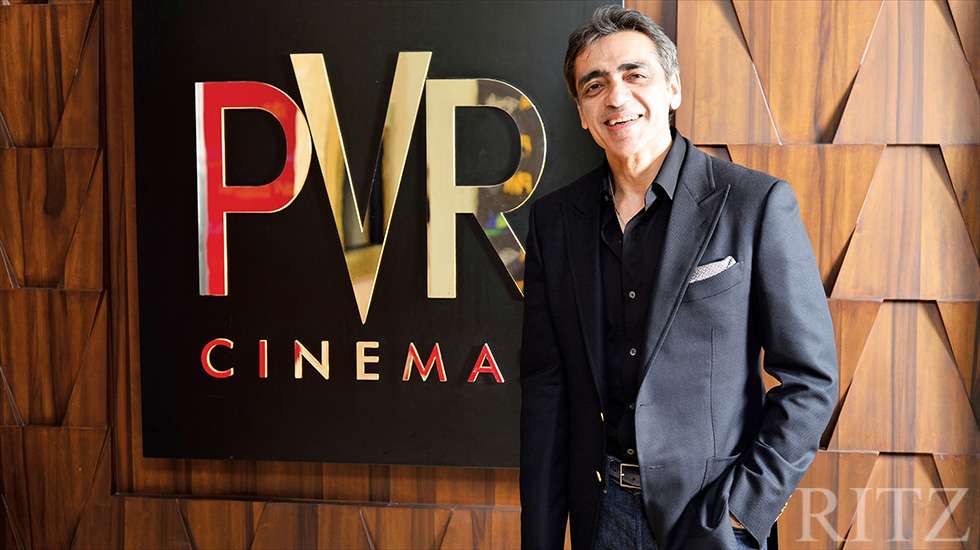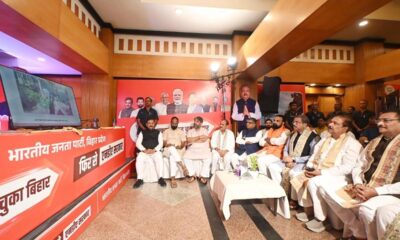PVR enters the two-tier cties-Sanjeev Kumar Bijli Executive Director explains
PVR enters the two-tier
cties-Sanjeev Kumar Bijli Executive Director
explains 
Reportedly, PVR Inox has made its entry into the two tier cities.
As the Indian cinema exhibition landscape faces a stagnation and, in some areas, a decline in the total number of screens, PVR INOX is charting a new course to address this crunch, especially in underserved markets.
India’s total screen count, long seen as inadequate for its population size, has plateaued around 9,000 screens according to industry estimates, a fraction compared to markets like China and the US.
In light of the declining screens, the lion’s share of the currently available screens is mostly taken by the Hindi movies and it affects the regional movies at large.
The National Award-winning actress Manasi Parekh, recently, had also recalled over the lesser number of screens for regional movies. She revealed that regional films are getting more recognition and they have more authenticity and get more recognition. They have a strong chance of turning out into a commercial box office hit. Ironically, screens are much less. There should be 250 screens for Gujarati films. That number should reach at least 2000 so more people will be able to watch the film.”
As per Sanjeev Kumar Bijli, Executive Director of PVR INOX Limited, he has laid out a clear-eyed vision that merges business foresight with creative inclusivity.
“Cinema is deeply woven into India’s cultural fabric, it’s not just entertainment, it’s a shared experience that brings people together.
Bilji also spoke about PVR INOX’s aggressive approach.
Regardless an estimated 9,600 – 9,800 operational screens across the country, a number that has barely moved in the last few years, Bijli sees an untapped opportunity, especially outside the urban centres.
Although,the total number of cinema screens in the country may be stagnating, PVR INOX sees significant untapped potential, especially in Tier-2, Tier-3, and Tier-4 cities and plans are afoot to add nearly 200 new screens over the next two years, with a sharp focus on emerging markets.
PVR Inox launched their multiplexes in Jabalpur and Raipur recently.
Adding that they have recently opened new cinemas in Raipur and Jabalpur, and are now expanding into locations like Gangtok, Dibrugarh, Agra, Siliguri, Ranipet, and Kumbakonam among others.
Bilji also.says the aim is to make cinema halls reach the ‘farthest corners of the country.’
Their aim is to reach even the farthest corners of the country, where the appetite
for a quality moviegoing experience is strong, but access has been limited. We believe the big screen still holds unique magic, and we’re committed to bringing that magic closer to more people across India.
Notwithstanding India’s rich regional film output, Hindi movies continue to dominate multiplex schedules, particularly amidst high-traffic weekends.
While addressing this trend, Bijli explains the rationale: “Hindi films do tend to dominate prime slots, largely because of their wider pan-India appeal and the scale at which they are marketed and released. That said, our programming decisions are increasingly driven by demand, data, and content strength rather than language alone.
They have seen regional films hold their own even amidst crowded weekends, and made room for them when the content connects. Strong regional titles, especially from Tamil, Telugu, and Malayalam industries, often perform exceptionally well beyond their home states.”
In the past Telugu and Tamil movies have ruled the box office, especially films like Pushpa 2: The Rule, Kalki 2898 AD which had big names like Allu Arjun and Prabhas. The films were blockbusters even in the Hindi belt.
On screen, the south is thriving. Tamil, Telugu, Malayalam, and Kannada industries together now represent 60% of India’s box office outpacing Hindi’s 40% share. Hits like Manjummel Boys (Malayalam) and Pushpa 2 (Telugu) show how regionals are stacking up. South Indian films are noted to have sizzled with a higher share at the box office in FY25, while Hindi and Hollywood lagged.
Yet despite spectacular earnings, regionals are starved for screens, which is a mismatch between audience appetite and exhibitor allocation.
Bijli says there is a clear, evolving strategy to ensure regional content is not sidelined. Rather than seeing OTT as a threat, Bijli says he sees it as a cue to diversify theatrical offerings.
“At PVR INOX, it’s their firm belief that content is king. Language, geography, or scale no longer limit a film’s potential—great storytelling travels. The remarkable success of Tamil, Telugu, and Malayalam films across non-native markets proves that audiences today are driven by quality and authenticity, he noted. At PVR they are wholly committed to giving regional cinema a consistent presence across our nationwide circuit. Be it a blockbuster from the South or a rooted story from the East, they ensure that strong content gets the platform it deserves, even in traditionally non-native markets. As exhibitors, their job is to champion compelling stories and bring them to audiences wherever they are.”
The single screen challenge
One of the biggest threats to regional and mid-budget Hindi cinema is the decline of single screen theatres, which have historically been their distribution backbone.
“Single-screen theatres have been the backbone of Indian cinema for decades, especially for regional and mid-budget Hindi films. But with changing viewer expectations and rising costs, their long-term viability is under pressure. While their decline does affect content reach in some pockets, we see it as an opportunity to reimagine access. At PVR INOX, they are into expansion into Tier 2 and Tier 3 cities with smart, compact multiplex formats that retain local flavour while offering a modern viewing experience. This will give them the help to continue supporting diverse cinema and ensure quality storytelling in reaching the audiences it deserves.
The escalation of OTT platforms and the enhancing costs associated with theatrical releases have prompted exhibitors to rethink programming.
Bijli agrees and says apart from regular screening of new releases, they are also curating special shows, organising movie festivals for the audience.
“Absolutely. The industry is evolving, and so are they. At PVR INOX, we are actively exploring alternate content strategies to complement traditional theatrical releases and make the most of our screen infrastructure. This includes a strong focus on live sports screenings, global concerts, anime, regional cinema, and carefully curated international films.
He went on to add that their initiatives like Timeless Classics and dedicated film festivals have permitted them to reintroduce iconic titles to new audiences, while also supporting diverse content that may not always follow the mainstream release model. They see this as a way to not just optimise screen usage but to enrich the cinematic ecosystem, offering a wider and more engaging palette of experiences to our audience.
On the critical question of how screen space is shared, especially when regional films outperform in their markets, Bijli asserted that they maintain a balanced approach rooted in audience intelligence.
Adding that balancing commercial viability with creative diversity is central to our programming philosophy at PVR INOX. Although occupancy and box office potential remain important, they also acknowledge the value of distinct voices and diverse storytelling and they track audience sentiment, pre-release buzz, and past performance data to make informed decisions. If a film shows strong promise, they allocate screens accordingly, regardless of language. Their aim is to serve a wide spectrum of audiences while ensuring that their screens reflect the richness and variety of Indian cinema today.
With a roadmap for 200 new screens and a deliberate pivot towards regional and Tier-2/3/4 markets, PVR INOX is doubling down on the belief that “the big screen still holds unique magic.”
As single-screens dwindle and OTT rises, the company’s strategy is to blend commercial acumen with a commitment to cinematic diversity — giving Indian audiences, wherever they may be, more reasons to return to the theatres.
With rising operational costs, changing viewing habits, and regional cinema breaking new ground, India’s exhibition business is at a crossroads. Biji says: “We believe the big screen still holds unique magic, and we’re committed to bringing that magic closer to more people across India.
News Edit KV Raman


















